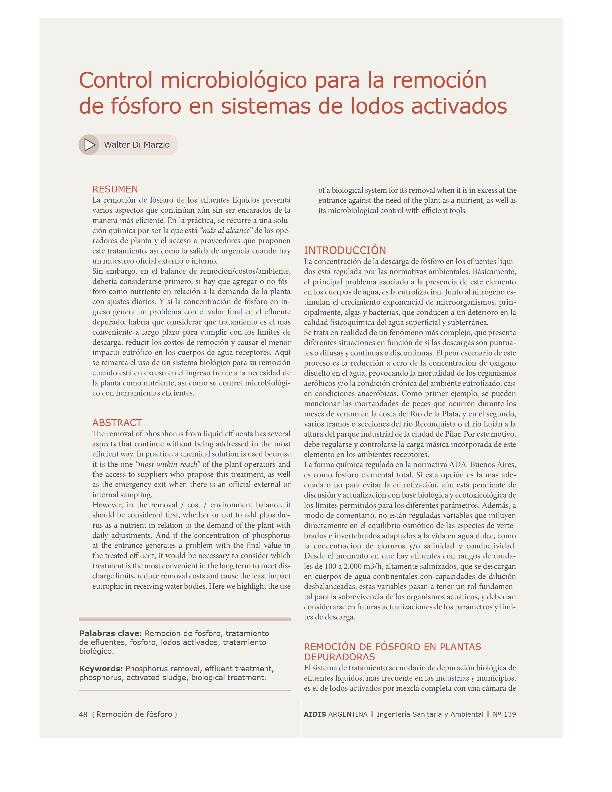Artículo
La remoción de fósforo de los efluentes líquidos presenta varios aspectos que continúan aún sin ser encarados de la manera más eficiente. En la práctica se recurre a una solución química por ser la que está "más al alcance" de los operadores de planta y el acceso a proveedores que proponen este tratamiento, así como la salida de urgencia cuando hay un muestreo oficial externo o interno.Sin embargo, en el balance de remoción/costos/ambiente debería considerarse, primero si hay que agregar o no fósforo como nutriente, en relación a la demanda de la planta con ajustes diarios. Y si la concentración de fósforo en ingreso genera un problema con el valor final en el efluente depurado, habría que considerar qué tratamiento es el más conveniente al largo plazo para cumplir con los límites de descarga, reducir los costos de remoción y causar el menor impacto eutrófico en los cuerpos de agua receptores. Aquí se remarca el uso de un sistema biológico para su remoción cuando está en exceso en el ingreso frente a la necesidad de la planta como nutriente, así como su control microbiológico con herramientas eficientes. The removal of phosphorus from liquid effluents presents several aspects that are still not addressed in the most efficient way. In practice, a chemical solution is used because it is the one "most within reach" of the plant operators and access to suppliers who propose this treatment, as well as the emergency exit when there is an official external or internal sampling. However, in the removal/cost/environment balance, it should first be considered whether or not to add phosphorus as a nutrient, in relation to the demand of the plant with daily adjustments. And if the concentration of phosphorus in the input generates a problem with the final value in the treated effluent, it would be necessary to consider which treatment is the most convenient in the long term to comply with discharge limits, reduce removal costs and cause the least impact. eutrophic in receiving water bodies. Here the use of a biological system for its removal is highlighted when it is in excess in the intake compared to the need of the plant as a nutrient, as well as its microbiological control with efficient tools.
Control microbiológico para la remoción de fósforo en sistemas de lodos activados
Fecha de publicación:
08/2020
Editorial:
Asociación Argentina de Ingeniería Sanitaria y Ciencias del Ambiente
Revista:
Ingeniería Sanitaria y Ambiental
ISSN:
0328-2937
Idioma:
Español
Tipo de recurso:
Artículo publicado
Clasificación temática:
Resumen
Archivos asociados
Licencia
Identificadores
Colecciones
Articulos(SEDE CENTRAL)
Articulos de SEDE CENTRAL
Articulos de SEDE CENTRAL
Citación
Di Marzio, Walter Dario; Control microbiológico para la remoción de fósforo en sistemas de lodos activados; Asociación Argentina de Ingeniería Sanitaria y Ciencias del Ambiente; Ingeniería Sanitaria y Ambiental; 139; 8-2020; 48-54
Compartir




